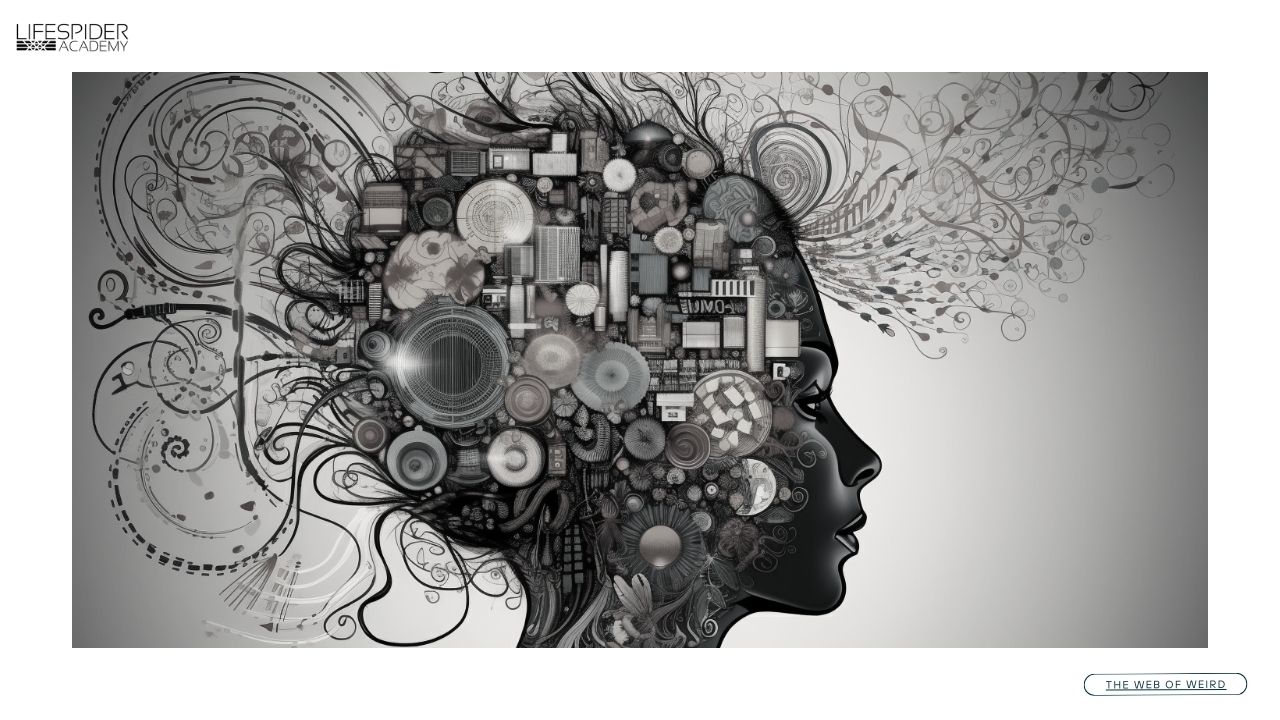What Does It Mean to Be Neurotypical? - 8 Shades of "Normal."

In discussions about neurodiversity, the term "neurotypical" often arises as a counterpart to "neurodivergent." But what does it really mean to be neurotypical? To answer this question, we must delve into the complexities of human cognition, societal norms, and the pressures that shape our behavior.
The Standard of Normality

Neurotypical individuals are those whose brain functions and cognitive processes align with societal norms—essentially fitting into what is "normal." But here's where it gets complicated: normality is a construct, often defined by what is most common, not necessarily what is most ideal or even beneficial. Society has shaped these norms over time, not because they represent the best way of thinking or being, but because they have become the most prevalent.
The Myth of Normality
In reality, the concept of neurotypicality is deeply intertwined with societal expectations that dictate acceptable behavior, thought, and interaction. These expectations create an invisible framework that everyone, consciously or unconsciously, tries to adhere to. This framework often marginalizes those who do not conform, particularly neurodivergent individuals, who process information and interact with the world differently.
The Pressure to Conform

Being neurotypical might sound like it's the easier path, but it comes with its own set of pressures. Imagine constantly having to fit into a box, even when that box doesn't always make sense or align with your true self.
Neurotypical individuals often experience unspoken pressure to think, behave, and interact in ways society deems acceptable. This pressure may hinder creativity, dampen curiosity, and limit the acceptance of diverse viewpoints, resulting in a rigid mindset that discourages and actively suppresses deviation from the norm.
Are You Stuck With a Duck? 
In Are You Stuck with a Duck? I explore how these societal norms create constraints that dictate behavior and thought, often at the expense of individual expression and creativity. This dynamic is vividly illustrated through the metaphor of the "duck pond," where inhabitants (the ducks) are bound by invisible rules that dictate their behaviors and choices.
Like neurotypical individuals, these ducks often avoid stepping outside the box. They are driven by a fear of the unknown and a need to maintain control over their environment.
"Ducks have trouble acknowledging their fears, and to avoid facing them, they have developed a defense system that reflexively appears when a confrontation approaches. When they criticize a quality or an action in someone else, they often find fault within themselves. The reluctance to accept criticism and suggestions for changes that challenge the self-image results in total denial".
The book challenges readers to question these norms and highlights the importance of extending the boundaries.
Neurotypical as a Constraint:

While neurotypicality might offer certain social advantages, it can also be a constraint. For those who fall within its bounds, there is an implicit expectation to conform, which can limit personal growth and the ability to explore new ideas. This conformity often leads to a lack of innovation and a fear of stepping outside established boundaries.
At the same time, it's essential to approach neurotypicality with empathy. Many neurotypical individuals may not fully realize their cognitive limitations or the privilege that comes with fitting into societal norms. By fostering understanding, we can create a more inclusive environment where neurotypical and neurodivergent individuals can thrive without the pressure to conform.
Challenging the Norms

The book also challenges readers to question these societal norms and embrace their unique way of thinking. I encourage readers not to accept these norms blindly but to challenge them. Just as the ducks in the pond often stick to what they know, neurotypical individuals may avoid exploring new perspectives or ideas that don't align with the accepted standards.
Why should one way of thinking be considered the "right" way?

Questioning the definition of neurotypicality allows us to appreciate diverse human experiences. Avoiding this inquiry can result in lost opportunities for growth and innovation. This perspective is essential for reframing neurotypicality as merely one of many valid ways of being rather than a standard to achieve.
"In a culture where the town of Jante and Mr. Murphy and Luther are the role models, we learn to work hard to survive, and that work cannot be united with joy. We invent a command that effectively limits expressions of pleasure and lively spontaneity, providing us with the notion that no one wants to listen".
This passage invites reflection on how societal norms can limit individual expression and urges a reevaluation of what it means to be "normal."
Empathy and Understanding

Ultimately, whether neurotypical or neurodivergent, everyone has their strengths and challenges. Understanding neurotypicality is just one part of creating a more inclusive society. It's not about labeling or dividing people; it's about recognizing that diversity in thought and behavior makes us human.
Join the Conversation:
So, what does neurotypical mean to you? Have you ever felt the pressure to conform to certain norms? Let's talk about it and explore how we can all embrace our unique ways of thinking.
8 Neurotypical Behaviors that can frustrate the Neurodiverse.
These behaviors highlight the differences in how neurotypical and neurodiverse individuals perceive and interact with the world. By approaching these differences with empathy and understanding, we can foster better communication and collaboration between all individuals, regardless of their cognitive style.








Conclusion: Embracing Neurodiversity

Understanding neurotypicality is crucial in our journey toward a more inclusive society. By recognizing the pressures and constraints of being "normal," we can foster empathy for neurotypical and neurodivergent individuals.
The concept of neurotypicality isn't about creating divisions but acknowledging the rich tapestry of human cognition and experience.
As we've explored the various shades of "normal," it becomes clear that there's no one-size-fits-all approach to thinking or behaving. Each of us, whether neurotypical or neurodivergent, brings unique strengths and perspectives to our society.
By challenging societal norms and embracing diversity in thought and behavior, we open ourselves to innovation, creativity, and a deeper understanding of the human experience.
Moving Forward Together

As we conclude our exploration of neurotypicality, I invite you to reflect on your own experiences and biases.
Have you ever felt the pressure to conform to societal norms?
How might understanding neurotypicality change your interactions with others?
Remember, the goal isn't to label or divide but to create a world where all types of minds are valued and respected. By fostering understanding, we can build bridges between different ways of thinking and create a more inclusive society for everyone.
Let's continue this conversation. Share your thoughts and experiences in the comments below, and together, we can work towards a world that celebrates the full spectrum of human cognition.
Birgitta
Founder of LifeSpider System™ and Your Navigator in The Web of Weird.
Subscribe to LifeSpider News, a publication focusing on Personal Evolution, Future Leadership, and empowerment to manifest your ideas that contribute to a better world. It is designed for "The Weird Ones," who have the potential to make a significant change and solve urgent global problems.






